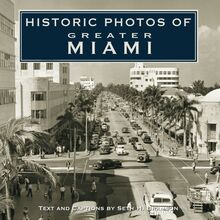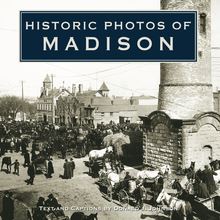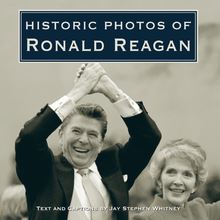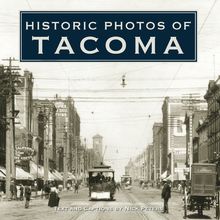Historic Photos of Thomas Edison , livre ebook
208
pages
English
Ebooks
2008
Vous pourrez modifier la taille du texte de cet ouvrage
Obtenez un accès à la bibliothèque pour le consulter en ligne En savoir plus
Découvre YouScribe en t'inscrivant gratuitement
Découvre YouScribe en t'inscrivant gratuitement
208
pages
English
Ebooks
2008
Vous pourrez modifier la taille du texte de cet ouvrage
Obtenez un accès à la bibliothèque pour le consulter en ligne En savoir plus
Publié par
Date de parution
01 février 2008
Nombre de lectures
0
EAN13
9781618584427
Langue
English
Poids de l'ouvrage
6 Mo
With 1,093 U.S. patents to his credit, Thomas Edison was one of history's most prolific and influential inventors. His Menlo Park and West Orange, New Jersey, laboratories pioneered industrial research and produced the first phonograph, practical incandescent electric lamp, and motion picture camera. Edison was also an entrepreneur who created dozens of companies to market his inventions, and he played important roles in the creation of the electric power, sound recording, and motion picture industries. Edison was also one of the first modern celebrities.
The 200 photographs in this book, selected from the Edison National Historic Site archives, portray Edison's long career, from his earliest experiences as a railroad newspaper vendor and telegrapher in the 1860s to his last important research project in the late 1920s, a search for domestic sources of natural rubber. These photographs provide revealing glimpses as well of his family life and personal friendships.
Publié par
Date de parution
01 février 2008
Nombre de lectures
0
EAN13
9781618584427
Langue
English
Poids de l'ouvrage
6 Mo
HISTORIC PHOTOS OF
THOMAS EDISON
T EXT AND C APTIONS BY L EONARD D E G RAAF
Edison with his miner s safety lamp in 1923. Edison failed to create a market for battery-powered automobiles, but he adapted his storage battery for other industrial applications, designing a lightweight battery to power miners lamps. These batteries did not release dangerous gases that could cause explosions in underground mines. His storage batteries were also used to power lighthouses, railroad signals, and small boats.
HISTORIC PHOTOS OF
THOMAS EDISON
Turner Publishing Company
200 4th Avenue North Suite 950
Nashville, Tennessee 37219
(615) 255-2665
412 Broadway P.O. Box 3101
Paducah, Kentucky 42002-3101
(270) 443-0121
www.turnerpublishing.com
Historic Photos of Thomas Edison
Copyright 2008 Turner Publishing Company
All rights reserved.
This book or any part thereof may not be reproduced or transmitted in any form or by any means, electronic or mechanical, including photocopying, recording, or by any information storage and retrieval system, without permission in writing from the publisher.
Library of Congress Control Number: 2007929647
ISBN-13: 978-1-59652-406-4
Printed in the United States of America
08 09 10 11 12 13 14 15-0 9 8 7 6 5 4 3 2 1
C ONTENTS
A CKNOWLEDGMENTS
P REFACE
T HE E ARLY Y EARS (1847-1875)
M ENLO P ARK L ABORATORY (1876-1882)
W EST O RANGE L ABORATORY (1887-1931)
T HE P HONOGRAPH AND M OTION P ICTURES (1886-1930)
E DISON IN W ORLD W AR I (1914-1918)
F AMILY AND F RIENDS (1871-1931)
F AME AND L EGACY
N OTES ON THE P HOTOGRAPHS
Edison outside the office of his Ogdensburg, New Jersey, ore milling plant in 1895. During the 1890s, Edison developed technology to process low-grade iron ore. In 1889, he created the New Jersey Pennsylvania Concentrating Works, which financed an experimental ore milling plant in northeastern New Jersey.
A CKNOWLEDGMENTS
This volume, Historic Photos of Thomas Edison , is the result of the cooperation and efforts of many individuals and organizations. It is with great thanks that we acknowledge the valuable contribution of the Edison National Historic Site for their generous support.
Thanks also to former acting superintendent Randy W. Turner for approving this project, the Friends of Edison National Historic Site for their support, and Edward Wirth, Michelle Ortwein, Greg Schmidl, and the staff of Edison National Historic Site for their assistance.
P REFACE
The images in this book, selected from the Edison National Historic Site historic photograph collection, illustrate Thomas A. Edison s long career as an inventor, entrepreneur, and public figure. They also reveal his private life, including Edison relaxing at home with his children, vacationing with his family in Florida, and traveling with his closest friends.
Edison rose from modest circumstances to become one of the most prolific and influential inventors in United States history, ultimately securing 1,093 U.S. patents, the record for the highest number of patents granted to an individual. He is perhaps best known as the inventor of the phonograph, the first practical incandescent electric lamp, and the motion picture camera-inventions that formed the basis of the electric light and electric power, sound recording, and motion picture industries.
Edison also made significant improvements to the telegraph and telephone, devised new methods to process iron ore and manufacture Portland cement, invented storage batteries for electric vehicles and other purposes, designed a process for constructing cement houses, and searched for new sources of domestic rubber. During World War I, Edison conducted research for the U.S. Navy aimed at protecting commercial shipping from enemy submarines. He also invented the electric pen, a forerunner of the mimeograph, and the fluoroscope, an early X-ray instrument.
Edison pioneered team-based industrial research at his Menlo Park and West Orange, New Jersey, laboratories. These laboratories fostered technical creativity and innovation by bringing together the skilled experimenters, tools, supplies, and other resources Edison needed to produce new inventions on a regular basis. The Menlo Park and West Orange laboratories served as models for the research and development facilities created by governments, corporations, and universities in the early twentieth century.
Edison was also an entrepreneur and business leader. From the early 1870s to the late 1920s, he created and managed dozens of companies to manufacture and market his inventions. For Edison, technical innovation involved more than solving technical problems in his laboratories. He also raised capital to finance his companies, established manufacturing facilities, identified potential markets for his inventions, and tailored marketing and advertising strategies to reach those markets.
Edison was one of the most recognized public figures of the late nineteenth and early twentieth centuries. A test of this notoriety came in April 1911, when a drugstore in Wilson, North Carolina, mailed Edison a letter with only his photograph on the envelope. Inside the envelope, a letter explained to Edison that during an argument in our store a few days since about the best known picture in the U.S. your name was mentioned and we said that your picture was known well enough to carry a letter to you without any address on [the] envelope. The letter reached Edison s desk in thirteen days.
Contemporaries recognized Edison because he used his image to promote his inventions. Edison s face and signature appeared in his advertising material and product packaging. Edison employed photographers at his Menlo Park and West Orange laboratories to document his work or create photographs for legal, administrative, or advertising purposes. Some of these images capture candid moments, but many others were carefully staged portraits of Edison working in his laboratories or posing with his inventions.
Many of Edison s photographs were produced for consumption by the public. The West Orange laboratory s photography department provided a steady stream of prints to fulfill photograph requests from Edison s admirers. Press photographers created images of Edison to illustrate newspaper and magazine articles. Other photographs, including candid shots and studio portraits of Edison and his family, preserved private memories. For whatever reason they were created, the approximately 60,000 historic photographs in the Edison National Historic Site archives provide a nearly complete photographic record of Edison s professional and personal life.
Thomas Alva Edison was born in this brick house in Milan, Ohio, on February 11, 1847. Nicknamed Al, he was the youngest of seven children born to Samuel and Nancy Elliott Edison.
T HE E ARLY Y EARS
(1847-1875)
Thomas Edison was born on February 11, 1847, in Milan, Ohio. In 1854 his family moved to Port Huron, Michigan. By most accounts, Edison had a typical childhood, but traits that later helped him succeed as an inventor, including an intense curiosity and capacity for hard work, emerged early in his life. As a boy Edison was particularly interested in science and technology. He read books on physics and chemistry and tinkered with machines. Archeological evidence uncovered at the site of his Port Huron home reveals that he had a chemistry set, complete with chemicals, glass beakers, and test tubes.
The railroads and telegraph lines spreading across the United States in the 1850s gave Edison his first professional experiences. From 1859 to 1863, he was a newspaper vendor on the Grand Trunk Railroad between Port Huron and Detroit. In 1863 he learned Morse code, allowing him to join the growing ranks of skilled telegraph operators during the Civil War. Between 1863 and 1868, Edison worked as an itinerant telegrapher throughout the Midwest and South, devoting his spare time to reading and experimenting with telegraph equipment.
Edison became a telegrapher for Western Union in Boston in the spring of 1868. Boston was a center of technical innovation, providing aspiring inventors like Edison with access to machine shops, a community of experienced electricians, and investors eager to develop new inventions. In Boston, Edison signed his first patent applications for an electric vote recorder and a printing telegraph, an instrument that transmitted stock prices and other financial information. In January 1869, he announced his decision to become a full-time inventor.
Edison moved to New York City in the spring of 1869. In August he became superintendent of the Gold and Stock Telegraph Company and, later that year, established an electrical consulting business. Edison came to New York in part to be closer to the managers of the leading telegraph companies, who required faster, more reliable technology to meet the growing demand for their services and who could provide Edison with the financial and marketing support he needed to develop his inventions. By the winter of 1870, Edison had opened his first shop in Newark, New Jersey, where he designed and manufactured a variety of inventions for the telegraph industry.
Thomas s father, Samuel, was born in Nova Scotia in 1804, the son of British Loyalists who moved to Canada after the American Revolution. In 1811 his family settled in Vienna, Ontario. Samuel became an innkeeper and, in 1828, married Nancy Elliott. He fled to the United States in 1837 after provincial authorities indicted him for participating in a failed political rebellion. In 1839 Samuel moved his family to Milan, Ohio, a booming canal town near Lake Huron.
Edison s mother, Nancy, was born in Chenango County, New York, in 1810, the daughter of a Baptist minister who moved his family to Vienna, Ontario. Nancy taught school in Canada, experience that later helped her teach Thomas to read and write.
Thomas with his sister Harriet Ann (Tannie), around 1854. Three of Edison














